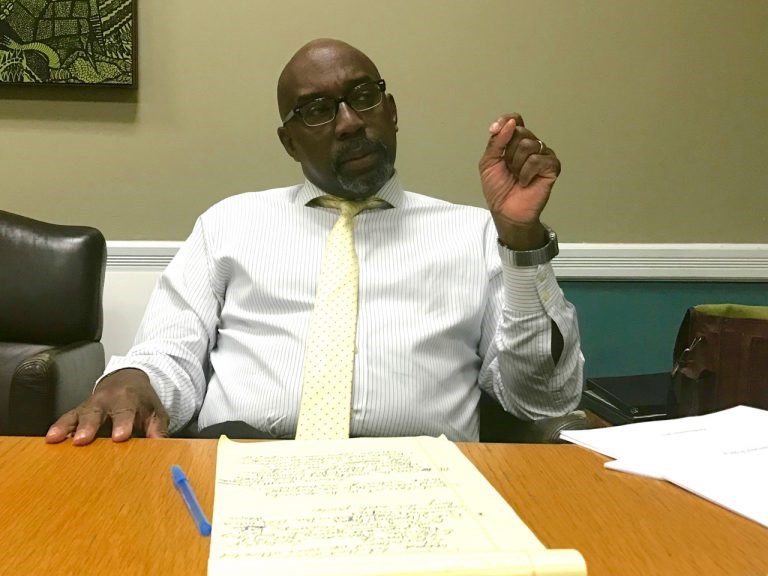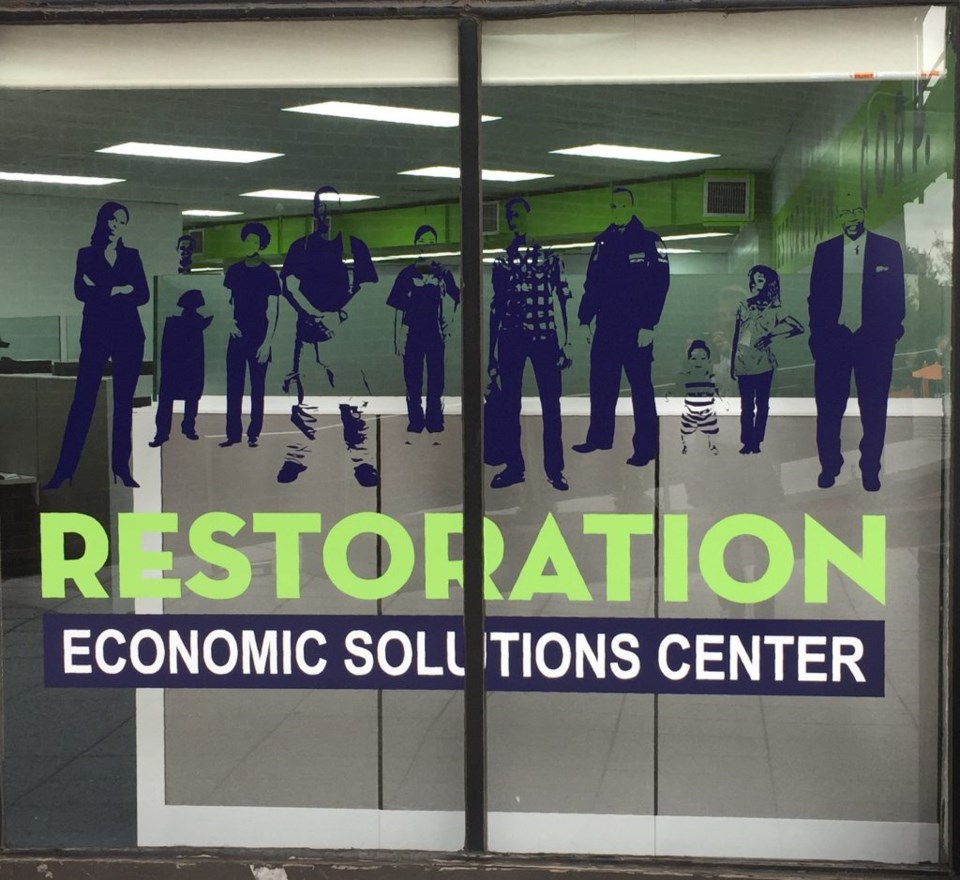2017 marked the 50th anniversary of the country's oldest community development corporation. Addressing affordable housing and the wealth gap emerge as priorities in 2018.

Founded in 1967 by Robert F. Kennedy, John Lindsay, Jacob Javits and Thomas R. Jones, Bedford Stuyvesant Restoration Corporation not only is the nation's oldest community development corporation but, also, it is one of the healthiest.
The organization has remained relevant and impactful through some America's most tumultuous socio-political changes and major advances, including the Vietnam War, the Watergate scandal, the birth of Hip Hop, the discovery of the AIDS virus, the devastation of the crack epidemic, the first American woman in space, the beginning of the desktop computer, the World Wide Web and the mobile phone...
Passing the Baton
As a community-based corporation established to serve the more than 400,000 residents of Bedford-Stuyvesant, Restoration has been forced to quickly evolve with the evolving landscape while maintaining financial viability and health. Not an easy feat.

"There were CDCs across the country that were trying different things; some of them worked; some of them didn't," asserted Wayne Winborne, vice chair of Restoration's board of directors. "The funding landscape shifted during the Reagan years. Everyone had to scramble. But we continue to work to try to find revenue streams and foundations and personal donations. All of that requires organizational dexterity, smart and capable senior managers who are able to work with the board and make the adjustments necessary."
Over the past three years, Restoration has transitioned its board to "those of the next generation," said Winborne. It's a refreshing next move for an old-school organization, particularly at a time when so many other older organizations struggle with the notion of passing the baton. But perhaps that has been the key to the organization's ongoing viability where others have failed-- understanding the importance of developing a transition strategy.
The Specialness of Restoration
There are many things that lend to Restoration's specialness, beginning with its historic inception as an anti-poverty organization focused on housing for poor and middle class blacks (the reason for Bed-Stuy's high concentration of African-American-owned brownstones), to its unique environmental sustainability programming, to its reputation as a gathering place for residents from all walks of life. However, at the crux of that specialness is the people. Restoration has always been an organization led by the very people it serves: African Americans.
"From the chairman, to the CEO to the managers... these are people coming out of communities that are marginalized," said Colvin Grannum, executive director and CEO of Restoration. "They've negotiated the challenge of coming up in a segregated community where there has been disinvestment and have led this organization with compassion, affinity that you just don't find everywhere.

"And we also don't talk about this that much, but we have an African-American female CFO, an African-American female head of program, and African-American female head of fundraising. There aren't too many places you can go and find a significant non-profit in excess of $10 million dollars where [black] women are making a substantial leadership contribution as what happens here. I just think this is a unique place."
Few people know that Restoration is a housing developer. It purchased the Hunterfly Houses for Weeksville and held the houses in trust until the center was formed and was able to take ownership. Restoration also created the Bed-Stuy Family Health Center and then spun it off. The organization founded and ran the community's first major supermarket, The Restoration Supermarket, from 1979 - 2004. The business was once named one of the top 50 minority-owned business in the city with sales of $30 million. The store eventually was sold to Pathmark, which later became Foodtown.
In fact, Restoration has been instrumental in helping to start many of the small businesses and facilitating the real estate purchases for several of the prominent business owners you might recognize today.
A Focus on Building Assets and Wealth
Although the vast socio-economic changes of the past few decades has required Restoration edit, amend and update its funding priorities, at the same time the organization acknowledges there are some priorities that have cycled back to the forefront, specifically financial and housing insecurity. According to Grannum, re-addressing home ownership and wealth building is a focus for Restoration, moving into their next half-century. "What we've decided to talk about is the wealth gap," he said. " If you delve into the racial wealth gap between blacks and whites, it is not just striking, but depressing. Net worth is a tangible thing, and in America, it is THE thing.
"That's what this whole game is about. That's what this tax reform bill is about. It is THE GAME. And I think African Americans, we haven't been talking about it. The average white household has 13 times the wealth of the black household. The average African-American moderate-income family has very little liquidity," said Grannum.
"Even when you control for education. If you take an African-American and a white person with comparable education and income, there's still this huge gap when it comes to actual wealth and net worth. Some of that is largely attributable to residential discrimination. The fact that we earn the same amount of money and we're comparably educated, when it comes to wealth, it's meaningless.
"So what we want to do is begin to educate about the importance of assets, because even for low-income people, modest amounts of assets can have a tremendous impact on your life.
[perfectpullquote align="full" cite="" link="" color="" class="" size=""]"You can experience the benefit of having a roof over your head at a price you can afford... it's like permanently affordable home ownership, a vehicle for asset building."[/perfectpullquote]
Grannum spoke of a new strategic plan they are unveiling in 2018 that advocates for community land trust and will emphasize financial management, saving and home ownership. When Restoration started, it had a $60 million mortgage pool-- homes that the city owned and then turned over to Restoration that it renovated and sold at a subsidized rate. They did again in the mid-2000s. They're preparing to do it again, but it will be a different model.
"Because no one anticipated that we would see this kind of price appreciation, which I'm describing as speculative," said Grannum. "But we have some land that we control in Bedford Stuyvesant that will allow us to pursue that."
The new model takes the speculative nature of real estate costs out of the home ownership model. That is, limited equity co-ops where the homebuyer purchases below market and earn an agreed upon rate of return which, over time, is often below market. So the future models will provide an agreed-upon return.

"It will be a modest return, but it will be a fair return," said Grannum. "So you can experience the benefit of having a roof over your head at a price you can afford with a little growth. So it's like permanently affordable home ownership. It's a vehicle for asset building."
It is something that they are advocating for and planning to do: adjust to the current environment where the real estate prices are so high, they don't allow most of the current or longtime residents to buy or reinvest in their own community.
"We are planning ahead," said Grannum. "Remaining relevant and useful to our residents is a critical part of our existence.
"From the magic of coming here on a Saturday and seeing all of the organizations from the community use us for planning and organizing, to how wonderful our cultural arts department is developing, the level and intensity of thinking happening not just with our staff but with people from all over the community... all of this is a part of the specialness of Restoration.
"And preserving this place, keeping it going," said Grannum, "I personally think is something the entire community should be proud of and should own."
This is the second in a 2-part series on "50 Years of Restoration." Read the first story here on the organization's historic beginning and burgeoning world-class cultural arts department.



